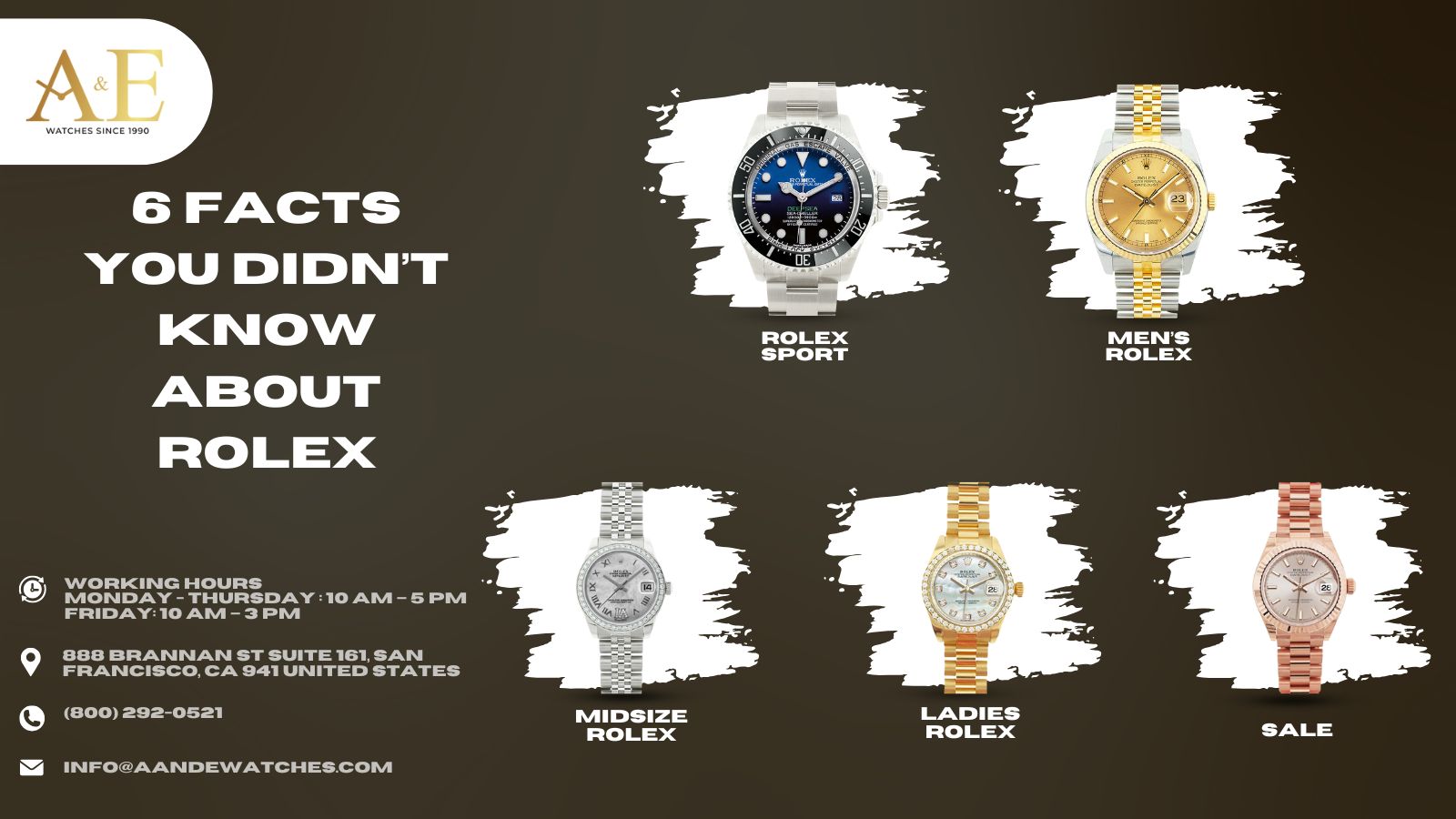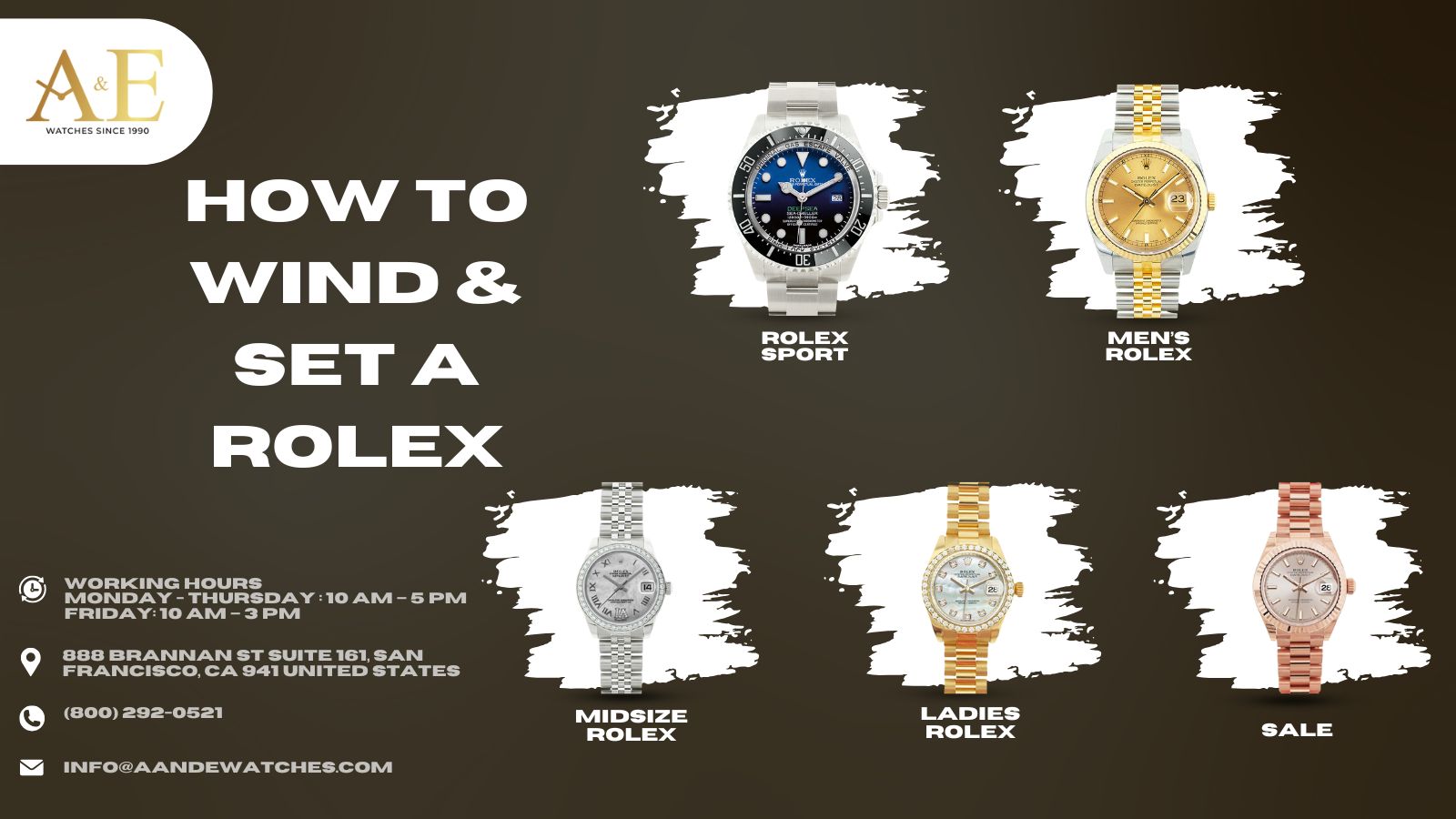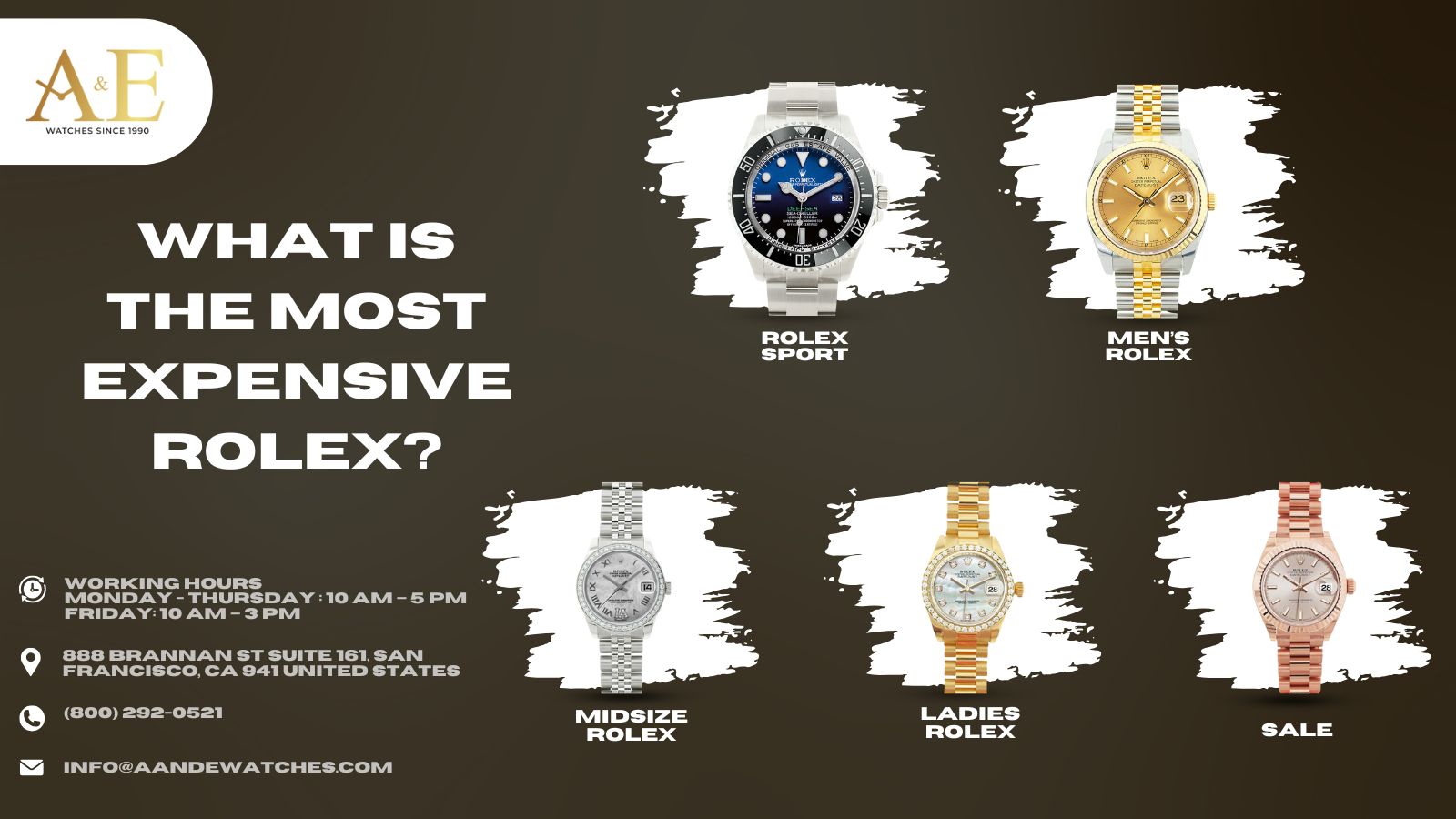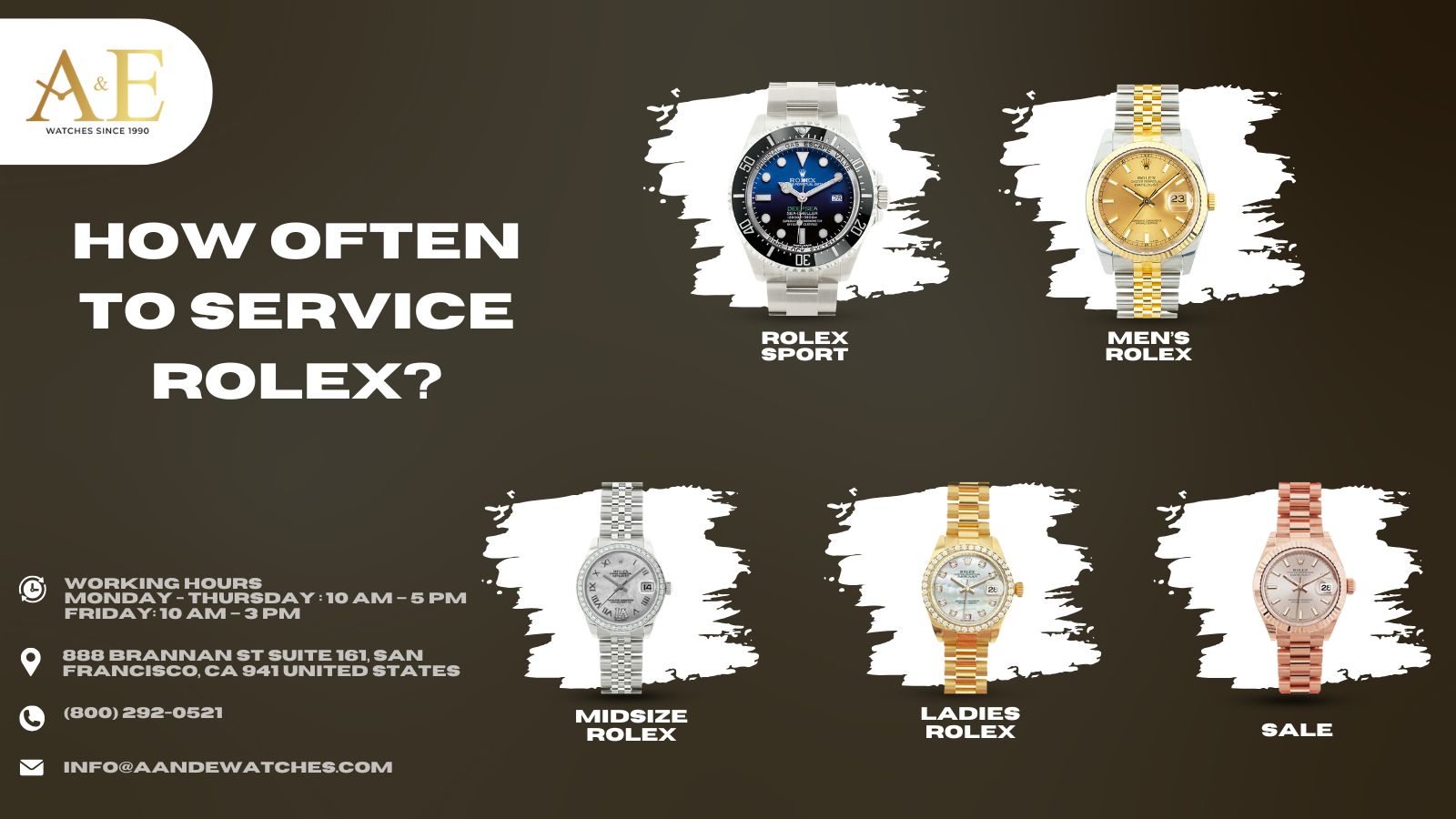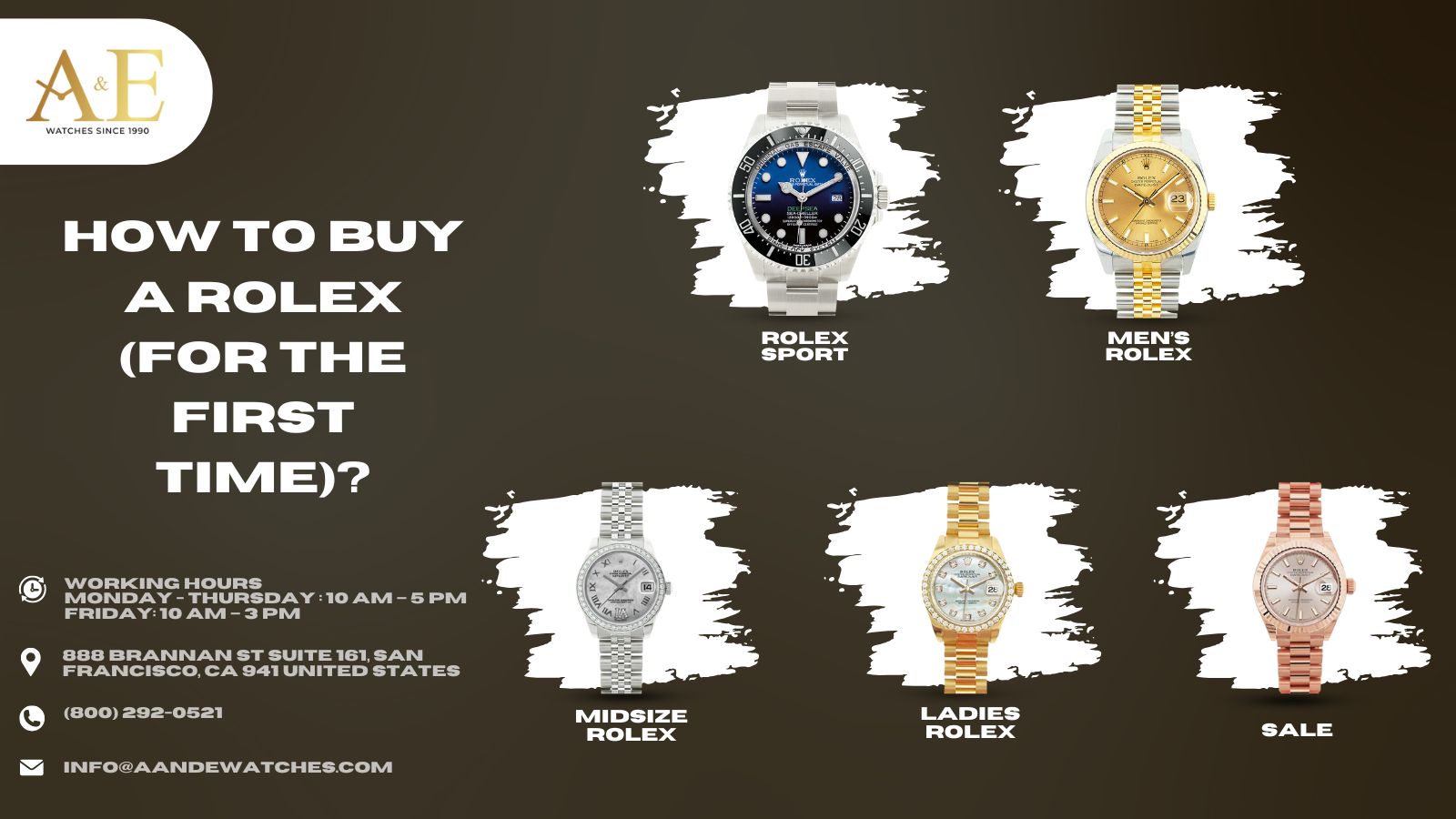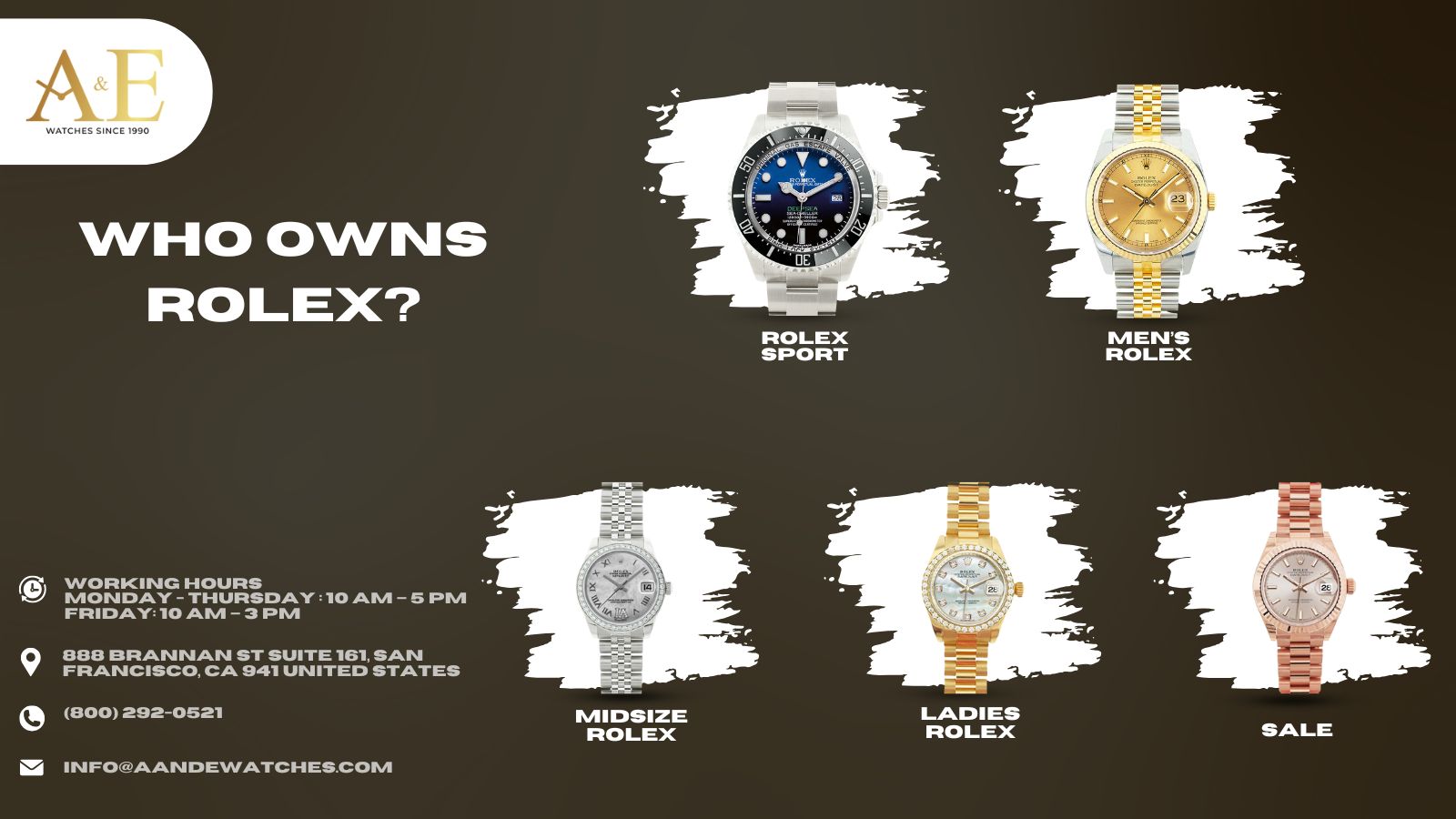Ever wonder what makes Rolex tick beyond its famous crown logo and luxury appeal? Rolex’s journey is filled with unexpected twists and turns, from its early days of using unconventional materials to its innovative breakthroughs that set industry standards. This iconic brand has a rich history and fascinating facts that might just surprise you.
Avi Dayan, passionate watch enthusiast and founder and owner of A&E Watches, shares some of the many remarkable discoveries and insights he’s gathered about the brand Rolex, as he approaches his 35th anniversary in the business. His deep dive into the brand’s history reveals a wealth of little-known details that shed light on how Rolex became the powerhouse it is today.
Here are 6 interesting facts you didn’t know about Rolex.
1. Early Rolex Watches Were Made of 9 Karat Gold and Silver
It’s almost unthinkable today, but in its early years, Rolex produced watches made from 9-karat gold and silver due to financial constraints. This was a strategic decision by Hans Wilsdorf, the founder of Rolex, to maintain affordability while building the brand’s reputation for quality and reliability. The use of 9-karat gold, which contains less gold content than 18-karat, allowed Rolex to offer luxury watches at a lower price point. For reference, 18-karat has become today’s Rolex standard, and every modern gold Rolex watch incorporates only solid 18k gold parts, so to think that 9-karat gold was the standard in Rolex’s early years is no less than mind-boggling.
Even more surprising is that Rolex went so far as to use silver to craft some of their early watch cases. Silver, while not as prestigious as gold, offered a durable and visually appealing option for watchmaking. These silver Rolex watches are now considered rare collectibles, coveted by enthusiasts for their historical significance and unique charm.
Who would have imagined that a brand now associated with such luxuriousness and excellence started with such humble materials? These early choices reflect the resourcefulness and foresight of Rolex’s founders, who prioritized establishing a solid foundation over immediate luxury.
Today, most of Rolex’s production is stainless steel, highlighting a continued commitment to creating durable and high-quality timepieces.
2. GMT Bezels Were Made from Plastic (Bakelite) in the 1950s
Yep, you read that right, PLASTIC (or otherwise known as “Bakelite”)
Another interesting chapter in Rolex’s history involves the creation of the Rolex GMT-Master, a watch specifically designed for pilots and frequent travelers. Introduced in the 1950s, the GMT-Master featured a unique bezel that allowed wearers to track multiple time zones. What’s surprising is that these bezels were initially made from plastic.
The choice of plastic was a practical one. During the 1950s, new materials were being explored across various industries, and plastic offered an affordable and versatile option. These early plastic bezels were lightweight and could be produced in vibrant colors, enhancing the watch’s functionality and aesthetic appeal.
Over time, Rolex transitioned to more durable materials, such as aluminum and later ceramic, for the GMT bezels. However, the early plastic versions remain a testament to Rolex’s innovative spirit and willingness to experiment with new technologies. Collectors today value these plastic bezels for their rarity and historical significance.
3. Hans Wilsdorf Enters a Men’s Market
In the late 19th century, wristwatches began as fashionable accessories for women. These early timepieces were dainty bracelet watches designed by pioneers like Abraham-Louis Breguet and Patek Philippe. They were more about elegance than precision, serving as stylish adornments that freed women from carrying bulky pocket watches. As these watches gained popularity, they set the stage for broader adoption and paved the way for future innovations.
The true revolution in wristwatches came with Hans Wilsdorf, the visionary founder of Rolex. Wilsdorf recognized the practicality of wristwatches and saw an opportunity to make them appealing to men. By adding lugs to traditional pocket watches, he transformed them into wristwatches that were both functional and fashionable for men. This innovation was particularly impactful during World War I, as soldiers needed reliable and accessible timepieces on the battlefield. Wilsdorf’s design helped shift wristwatches from being seen as feminine accessories to essential tools for men, marking a significant turning point in horological history.
Before Wilsdorf’s groundbreaking work, wristwatches for men were rare, with notable early examples including those made by Girard-Perregaux for German Naval Officers in the 1880s and the Cartier Santos designed for aviator Alberto Santos-Dumont in 1904. The evolution of wristwatches continued to accelerate, with significant milestones such as the development of pilot watches, diving watches, and eventually the modern wristwatch. Today, wristwatches have become universal, serving as both fashion staples and vital tools across various professional fields, all thanks to the innovative spirit of pioneers like Hans Wilsdorf of Rolex.
Rolex’s ability to anticipate and drive market trends was crucial in establishing its reputation as a forward-thinking and innovative brand.
4. Rolex Designed The First Waterproof Watch: The Oyster
In 1926, Rolex introduced the Oyster, the world’s first waterproof wristwatch. This groundbreaking innovation was made possible by carving the watch case from a single piece of metal, creating a hermetically sealed environment that protected the movement from dust and moisture. The name “Oyster” accurately described the watch’s ability to remain impervious to water, much like an oyster shell protects the pearl inside.
The Oyster’s waterproof design was a game-changer, setting new standards for durability and reliability in wristwatches. To prove its effectiveness, Rolex famously had a swimmer wear the Oyster while crossing the English Channel in 1927. The watch emerged unscathed, cementing Rolex’s reputation for producing robust and dependable timepieces.
This innovation not only boosted Rolex’s standing in the watch industry but also paved the way for future advancements, such as the development of the Submariner and Sea-Dweller models, which have become iconic in their own right.
5. The Swiss Watch Industry’s Roots in Religious Persecution
The prominence of the Swiss watch industry, including Rolex, can be traced back to the Huguenots, French Protestants who fled religious persecution in the 16th and 17th centuries. Many Huguenots sought refuge in Switzerland’s mountainous regions, where they could practice their faith and crafts in relative safety.
Among the skills they brought with them was watchmaking. The Huguenots’ expertise, combined with Switzerland’s tradition of precision craftsmanship, helped establish the country as a hub for horology. Over time, Swiss watchmakers, including Rolex, became renowned for their meticulous attention to detail and innovative techniques.
This historical migration highlights the resilience and resourcefulness of those early watchmakers. Their legacy lives on in the Swiss watch industry, which continues to lead the world in quality and innovation, with Rolex at the forefront.
6. Rolex Made Square Chronographs
While Rolex is best known for its round watch cases, the brand has occasionally ventured into more unconventional designs. One such example is the square chronograph, a rare and distinctive model that stands out in Rolex’s extensive catalog.
Introduced in the 1930s, the square chronograph featured a rectangular case and was equipped with a chronograph function, allowing wearers to measure elapsed time with precision. This design was a departure from the traditional round cases that dominated the market, showcasing Rolex’s willingness to experiment and push boundaries.
Today, these square chronographs are highly sought after by collectors and enthusiasts. Their unique design and historical significance make them a testament to Rolex’s versatility and innovation in watchmaking.
The Bottom Line
Understanding the history of Rolex is essential to appreciating the prestige and excellence the brand represents today. The journey from humble beginnings, marked by financial constraints and bold experimentation, to becoming a global symbol of luxury, is a testament to the brand’s dedication to quality and innovation.
Just as Rolex evolved through patience, persistence, and adaptation, so too has A&E Watches. Avi Dayan explains that his business has endured similar challenges and triumphs, growing steadily over the years to become a trusted name in the industry. The story of Rolex, much like that of A&E Watches, reminds us that great success often stems from humble beginnings and relentless determination.

